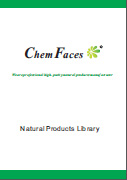| Description: |
Colchicine is a tubulin inhibitor, and a microtubule polymerization inhibitor with an IC50 of 3 nM. It prevents amyloidosis in our high-risk population and that it can prevent additional deterioration of renal function in patients with amyloidosis who have proteinuria but not the nephrotic syndrome. Colchicine has anti-mitotic activity, it can be used to treat familial mediterranean fever, and as a lead compound for the generation of potent anti-cancer drugs. |
| Targets: |
IL Receptor | TNF-α |
| In vitro: |
| Med Res Rev. 2008 Jan;28(1):155-83. | | Anti-mitotic activity of colchicine and the structural basis for its interaction with tubulin.[Pubmed: 17464966 ] | | In this review, an attempt has been made to throw light on the mechanism of action of colchicine and its different analogs as anti-cancer agents. Colchicine interacts with tubulin and perturbs the assembly dynamics of microtubules. Though its use has been limited because of its toxicity, colchicine can still be used as a lead compound for the generation of potent anti-cancer drugs. Colchicine binds to tubulin in a poorly reversible manner with high activation energy. The binding interaction is favored entropically. In contrast, binding of its simple analogs AC or DAAC is enthalpically favored and commences with comparatively low activation energy. Colchicine-tubulin interaction, which is normally pH dependent, has been found to be independent of pH in the presence of microtubule-associated proteins, salts or upon cleavage of carboxy termini of tubulin. Biphasic kinetics of colchicines-tubulin interaction has been explained in light of the variation in the residues around the drug-binding site on beta-tubulin. Using the crystal structure of the tubulin-DAMAcolchicine complex, a detailed discussion on the pharmacophore concept that explains the variation of affinity for different colchicine site inhibitors (CSI) has been discussed. |
|
| In vivo: |
| N Engl J Med. 1986 Apr 17;314(16):1001-5. | | Colchicine in the prevention and treatment of the amyloidosis of familial Mediterranean fever.[Pubmed: 3515182 ] |
METHODS AND RESULTS:
To determine whether colchicine prevents or ameliorates amyloidosis in patients with familial Mediterranean fever, we followed 1070 patients with the latter disease for 4 to 11 years after they were advised to take colchicine to prevent febrile attacks. Overall, at the end of the study, the prevalence of nephropathy was one third of that in a study conducted before colchicine was used to treat familial Mediterranean fever. Among 960 patients who initially had no evidence of amyloidosis, proteinuria appeared in 4 who adhered to the prophylactic schedule and in 16 of 54 who admitted non-compliance. Life-table analysis showed that the cumulative rate of proteinuria was 1.7 percent (90 percent confidence limits, 0.0 and 11.3 percent) after 11 years in the compliant patients and 48.9 percent (18.8 and 79.0 percent) after 9 years in the noncompliant patients (P less than 0.0001). A total of 110 patients had overt nephropathy when they started to take colchicine. Among 86 patients who had proteinuria but not the nephrotic syndrome, proteinuria resolved in 5 and stabilized in 68 (for more than eight years in 40). Renal function deteriorated in 13 of the patients with proteinuria and in all of the 24 patients with the nephrotic syndrome or uremia.
CONCLUSIONS:
We conclude that colchicine prevented amyloidosis in our high-risk population and that it can prevent additional deterioration of renal function in patients with amyloidosis who have proteinuria but not the nephrotic syndrome. | | New Engl. J. Med., 1974, 291(18): 934-7. | | Colchicine Therapy for Familial Mediterranean Fever: A Double-Blind Trial[Reference: WebLink] |
METHODS AND RESULTS:
Eleven patients with long standing familial Mediterranean fever were studied in a double blind trial using daily colchicine or placebo. During 60 courses of placebo, 38 attacks of familial Mediterranean fever occurred. In contrast, during 60 courses of colchicine only seven attacks occurred (p < 0.001, by chi square test). The 7 attacks on colchicine were evenly distributed throughout the study period. Although the initial dose was 3 tablets daily, most patients were maintained on 2 tablets of colchicine per day. The efficacy of the drug in preventing attacks of familial Mediterranean fever was dose related. There were no major side effects from daily colchicine except frequent loose stools, which were correctable by reduction of the dose.
CONCLUSIONS:
This study demonstrates that daily colchicine is highly effective in preventing attacks in this disorder. |
|
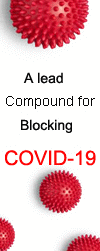
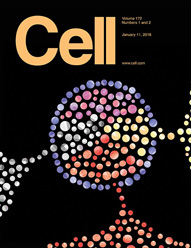 Cell. 2018 Jan 11;172(1-2):249-261.e12. doi: 10.1016/j.cell.2017.12.019.IF=36.216(2019)
Cell. 2018 Jan 11;172(1-2):249-261.e12. doi: 10.1016/j.cell.2017.12.019.IF=36.216(2019)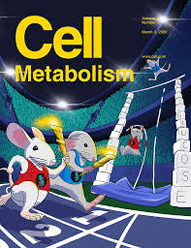 Cell Metab. 2020 Mar 3;31(3):534-548.e5. doi: 10.1016/j.cmet.2020.01.002.IF=22.415(2019)
Cell Metab. 2020 Mar 3;31(3):534-548.e5. doi: 10.1016/j.cmet.2020.01.002.IF=22.415(2019)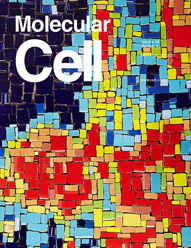 Mol Cell. 2017 Nov 16;68(4):673-685.e6. doi: 10.1016/j.molcel.2017.10.022.IF=14.548(2019)
Mol Cell. 2017 Nov 16;68(4):673-685.e6. doi: 10.1016/j.molcel.2017.10.022.IF=14.548(2019)